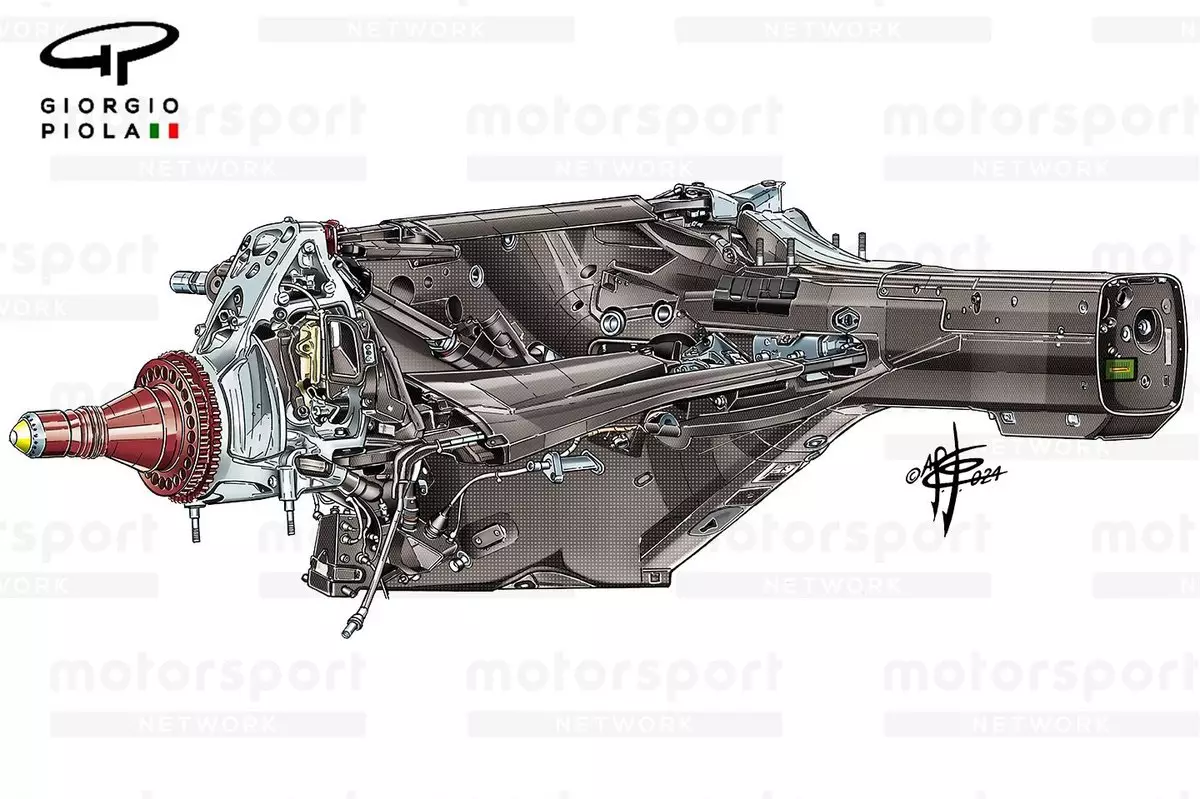In the world of Formula 1, the technological advancements made by the teams are crucial for gaining a competitive edge on the track. One of the key areas of focus for teams is the suspension system of their cars. While many expected Ferrari to follow in the footsteps of Mercedes and Aston Martin by making significant changes to their suspension setup, Ferrari decided to take a different approach.
Unlike Haas, which relies on components supplied by Ferrari, and Williams, which opted for Mercedes’ previous setup, Ferrari chose to stick with its own design. However, this does not mean that Ferrari did not make any changes to their suspension system. One of the most noticeable alterations is the change in the length of the chassis, resulting in the shortening of the gearbox casing and rear crash structure. This adjustment was made to optimize the overall dimensions of the car.
The decision to maintain a pull-rod suspension setup was accompanied by changes to enhance aerodynamic performance. By repositioning the pull-rod’s inboard position, Ferrari aimed to improve both the mechanical performance of the suspension and the aerodynamic output of the car. The new position of the pull-rod intersection with the bodywork allows for the creation of sloping sidepod bodywork and improves airflow into the coke bottle region, ultimately increasing overall aerodynamic efficiency.
Similarly, McLaren has also made adjustments to their suspension setup to unlock more performance this season. The team focused on repositioning the steering arms and suspension members to optimize aerodynamic output. By relocating the steering arm behind the rear leg of the lower wishbone, McLaren aimed to improve airflow behavior and create a more efficient aerodynamic package. This strategic positioning of components has led to enhancements in both performance and aerodynamic efficiency.
The changes made by Ferrari and McLaren to their suspension systems demonstrate the continuous pursuit of performance gains in Formula 1. While Ferrari chose to stick with its unique setup, McLaren took a more innovative approach to achieve similar goals. The evolution of suspension systems in Formula 1 cars plays a critical role in maximizing performance on the track. By making strategic adjustments and optimizations, teams can gain a competitive edge and stay at the forefront of technological advancements in the sport.
The evolution of suspension systems in Formula 1 cars highlights the constant drive for innovation and performance improvement in the world of motorsport. Teams like Ferrari and McLaren are at the forefront of these developments, making strategic changes to their suspension setups to enhance aerodynamic efficiency and overall performance. As technological advancements continue to shape the landscape of Formula 1, teams must adapt and evolve to stay competitive in the fast-paced world of racing.


Leave a Reply